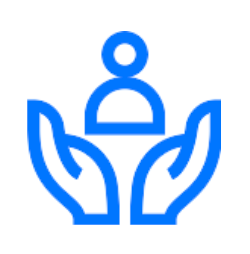2022 proved to be a challenging year in the world of recruitment. 3 out of 4 employers worldwide reported difficulty in hiring the right talent. A number of factors contribute to this: global economic changes and radical political changes affect the employment market, and above all, new technologies are being developed at a dizzying pace, which requires employees to continually upgrade their skills.
While the skill gap in the job market continues to grow, the need for a personal upgrade on the part of employees remains the same – as they wish to stay updated and relevant. Therefore, they must educate themselves on certain topics with training programs outside the framework, while management experiences “mental fixation” regarding their part in the employee’s development.
What can be done to bridge the gap between the organization and its employees?
Recruiting and HR are changing and getting more focused on employee retention strategies – grooming them as full-fledged employees versus blowing up salaries and throwing awesome parties. Many studies show that what matters most for any employee, junior to senior is the ability to learn and develop inside the organization. Organizations that educate to develop their L&D departments will benefit from this long-term investment leading to organizational growth by nourishing the human capital.
In a special webinar held with our business partner “Limi,” we expanded on their thorough research under the leadership of Maya Almakais – Head of L&D Research & Lecturer. The data report presents the upcoming learning trends for 2023 and what we – learning professionals, can derive from them. “Our goal is to help everyone make more professional and informed decisions while looking at where our paths lead us in the global changes happening in the worlds of L&D and HR,” says Rinatya Levin – Brouchim, founder and CEO of Limi.
What factors affect the worlds of learning and human resources?
As those who manage human capital, it is important to remember that, just like us,these are human beings who are affected by what is happening in the world. Therefore, we must be aware of certain social, technical, and environmental issues, how they affect us and what are the implications:
Education: According to data from the OECD, Israel is considered one of the most educated countries in the world, with almost 50% of its population having academic education. However, regarding the skills required in the workplace – we still have a substantial gap compared to the rest of the world. It starts with what and how we teach in educational institutions and professional academies, compared to the skills needed in the modern job market. Why is this trend important? Because, in the end, it is the organization’s responsibility to bridge this gap.
Consumerism & Marketing: the keyword is content. Content continues to rule our lives, and the more alive, innovative, and authentic it is, the more it will lead to building reputation and brand loyalty. It meets us in our personal life and the business world – mainly in customer experience in organizations. For this well-oiled machine to work, there’s a need for a strong, committed team having faith in the product and the organization.
Management culture: A “Chaotic management” is a flexible management, which maintains the balance between managing the organization according to orderly work plans alongside dynamic conduct and controlling chaos. “This year, this type of management expands to paradoxical management of opposing abilities. On the one hand, knowing how to be strict when necessary. On the other hand, to understand human psychology, to manipulate situations properly. We also see that this year, the need to give hope and perspective to employees in the crazy era we are experiencing has grown”, says Rinatya.
The Job Market: Rinatya explains, “Despite the severe trembles experienced in this market, we are still able to see some major changes in it: employees have changed their attitude, not ready to tolerate everything. Organizations are slowly moving to conduct themselves more like a community and less like a hierarchy. But with all this, we still feel the skills gap growing in the face of the professional demands in the job market.” This requires us as an organization to truly develop our human capital because without it – we cannot have organizational growth.
Technology: Let’s take the Metaverse – a field in which huge amounts of funding and effort are invested. Or the AI world, which is evolving and becoming more and more significant. “The rules of the game are changing. Today’s technology greatly impacts HR and L&D. This means that the race for human relevance has become more important than ever,” explains Rinatya.
The conclusion that emerges from this is that in every profession, the most qualified employees are the ones who will be able to provide solutions for technical needs. As managers, we must all care for learning development to be relevant.
Economy: We are experiencing great volatility that leaves behind a pessimistic feeling – the world is undergoing massive layoffs in high-tech. Therefore, many organizations are starting to focus on avoiding crises (thinking about being more efficient and reducing necessities wherever possible). That is why we must be aware of this situation and consider it in our practice.
“All these challenge our trust in institutions, the economy, politics, our organizations, and the job market. We are moving from post-pandemic survival to a search for recovery and optimism. Taking care of your human capital is critical for employees and organizations to prosper,” says Rinatya.
Top three trends you must know and embrace:

1. Moving to an ecosystem:
“Every organization has those in charge of promoting human capital. Sometimes it seems as if each one of them steers alone their boat, but they all steer in the same direction,” explains Dr. Eran Gal – Head of Department, Graduate Studies – Instructional Technologies, HIT. “There are many conflicts between the decision-makers, and our goal is to unite them and avoid politics that distance and divide.”
“The dependence of each department on another creates an ecosystem for employee development. As soon as an organization maintains smooth communication and looks at itself as one, it will reach its goals and KPIs. Although the situation creates mutual reliance, when an ecosystem works well – you can fight any challenge that comes,” adds Rinatya.
Guy Laufer, VP Learning & Product at Elevation, shared the cooperation between Elevation and CyberArk, which we elaborated on in our previous blog: “The company stood in front of bulk recruitment of developers. Instead of turning to normal recruitment channels, they contacted us for the Train To Hire Academy. We sat down with development, learning, and recruitment managers to get a broad picture of how we could create a program with a significant impact. This is how we established an in-house training academy with a greater added value than just the training itself. The company saved itself the first two stages of recruitment and onboarding (financial savings of approximately 11,000 NIS per candidate), and the program created a new, strong ecosystem in the company.”

2. Managing paradoxes: employees vs. organization. People vs. technology:
“As learning personalities, we constantly live in a world of tensions: on the professional side, we might need to operate according to traditional work methods instead of innovative ones. Putting people in front of technology is becoming a dramatic part of our ability to succeed. On the organizational concern – we need to find our uniqueness compared to the ecosystem we wish to belong to. It’s pleasing the employees versus pleasing the organization,” Dr. Gal elaborates.
Guy emphasized, “It is necessary to find the balance between the physical and digital worlds. We at Elevation are also looking for this balance through the creation of a technological infrastructure that will give us the ability to transfer and collect information that will serve us further in the face of the desire to keep people at the front – for physical support, and in general – to be a human factor within all this tech.”

3. Restoring trust:
We are in a global trust crisis in organizations, governments, and other institutions. We need to bring back faith in learning processes. Unfortunately, learning today is being treated as a “burden” – school, homework, studying for a degree, all to have a certification with a number on it creates a dissonance. In addition, most people don’t have the time to learn. There is a gap between the desire to develop yourself and the actual ability to do so.
Tips to restore employees’ trust in the organization:
- Love your employees and listen to them – sit with them at round tables, have one-on-one conversations, and understand together how to solve problems and how to enable them to enjoy organizational learning.
- Understand what motivates them and what will help increase it.
- Switch to learning based problem-solving. One that is based on life experience and not just theoretical learning, as in academic institutions.
- Find the sweet spot where learning will be accurate for the employees and the organization. The timing needs to be relevant, the topics appropriate, and the way you present the importance of education will be a decisive factor.
- Present learning as a gift and not a burden, making sure the employees perceive it as a valuable gift. Thus, the organization “will be the Santa Claus and not the corporate policeman,” as Rinatya defines.
To Conclude:
We are experiencing a challenging period in the job market, recruitment in particular. To unite all the pieces together and create an ecosystem that functions to achieve goals: create collaborations between all the managers and create a strong array from which you can build a learning strategy compatible with your KPIs and the new occupational paradigm.
We will refine and emphasize again – investment in human capital is the key to organizational success. It is a long-term investment for which you need to raise both budget and your finest people to help implement any process.
Read the full Trends Report to deepen the learning trends to lead 2023
(available in Hebrew only)
Do not hesitate to contact Elevation if you need help building your in-house employee training.







